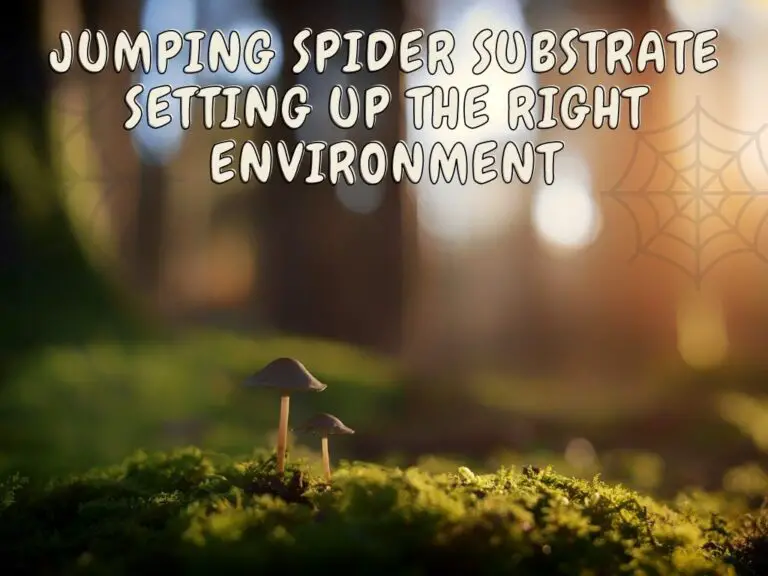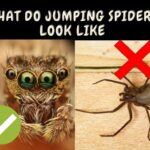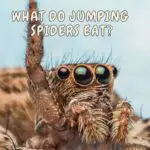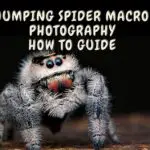Putting the right jumping spider substrate and following the best jumping spider pet care remains the most critical factor to consider before any keeper ventures into getting a spider. In case you’re not aware, substrates serve multiple purposes in your jumping spider’s enclosure.
They maintain humidity, facilitate waste removal, permit the expression when it comes to natural behaviors, promote healthy plant growth, and serve as a microfauna medium. The list is endless.
These little creatures can be delightful pets if you take proper care of them. Jumping spiders are among the most intelligent spiders, and they always love interacting with their human keeper. Within time, you’ll get to discover the specific personalities that distinguish them. For instance, some jumping spiders might be skittish, while others are shy or calmer. You need to take your time and observe.
It’s shocking to most people about some’s increased yearning to start keeping spiders as pets. These lovable creatures will provide you the opportunity to get to know more about nature. Therefore, in this write-up, or attention will be on jumping spider substate and how to take proper care of your pet spider. So, if you’re an aspiring keeper, read on.
Types of Jumping Spider Substrate
Naturalistic Substrates — This makes it easy to set up a naturalistic vivarium quick and easy. It will save you time and extra expenses and allow you to reproduce a small jungle in your house. Not only are these substrates cost-effective and straightforward to use, but they’re also high quality.
Spider Incubation Media — This is important to your success in breeding jumping spiders. It must retain water to make available the required humidity to developing jumping spiders. Furthermore, it will resist the growth of mold and make the enclosure not overly wet.
Premium Spider Substrates — This is well rugged and has proven to serve as a multipurpose substrate ideal for many jumping spiders’ species, including other amphibians or reptiles. The materials are environmentally friendly and are sourced from renewable materials to ensure your jumping spider gets the very best enclosure.
Setting up a jumping spider enclosure
- It’s important to note that Jumping spiders are arboreal. By this I mean, they’ll require a tall enclosure. However, you can make use of a smaller enclosure for little spiderling. For instance, you can go for an enclosure that is approximately 4x4x6 inches or 10x10x15cm. But as your jumping spider grows, you need to upgrade it with something approximately 6x6x10 inch or 15x15x25cm in size.
- It’s essential to provide adequate ventilation to get rid of mould growth as well as stagnated air. The ventilation holes should be made small to prevent your jumping spider from escaping, but it must be wide enough for easy air passage. Useful box — with holes for Ventilation are cheap and easy to come by. Also, it will help you to provide all the necessities your spider might require.
- The enclosure should also have a door because it will benefit the spider, especially when you want to maintain the enclosure. This is because your spider tends to build its sac at the top of the enclosure. Hence, having a lid at the top will always disturb the spider.
- There should be decoration inside the enclosure to enable the spider to explore. For instance, you can include some cork bark, which comprises false plants or a few sticks. These will provide different terrains for your spider to climb on. Most importantly, the materials must not be prone to mould.
- A small acrylic enclosure is more preferable to keep your spider. It can be used for a more extended period.
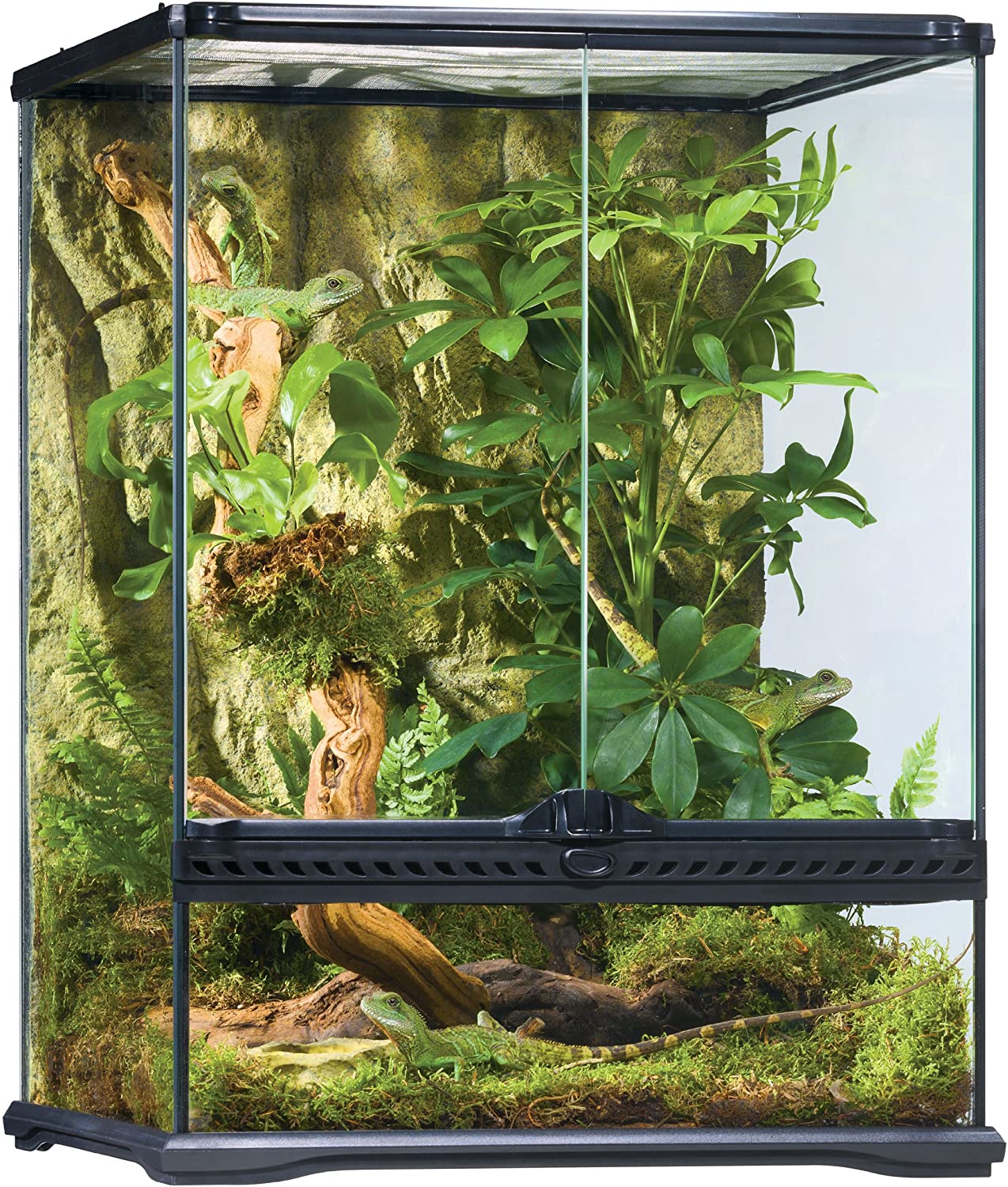
Humidity
Though the enclosure should be kept dry, that’s not a license to keep it completely dry. In as much as jumping spiders prefer to be on brick walls or bright environments, they also look for humid areas, especially where they can find water. In line with this, you can make a part of the enclosure to be slightly moist. Substrates should be damp regularly.
The enclosure side should also be lightly mist to allow your spider to use the drops remaining to hydrate itself. To get a good result, a spray bottle is more preferable.
Lighting
The location of the enclosure should have a source of bright light because jumping spiders enjoy the light. Furthermore, it also makes them more active and willing to eat the food given to them. Ordinarily, jumping spiders enjoy an environment with an average room temperature of between 28-32C. This can be easily achieved using a LED lamp. Alternatively, if you can afford an Exo-terra Nano enclosure with canopy as lighting, you can go for it.
Drinking water
Jumping spiders make use of structures known as book lungs to breathe. This can be found in their abdomen and not the head like other creatures. The structures resemble book pages, hence the name. If you mistakenly put too much water on their abdomen, it’s likely to suffocate your spider because the water can get in between the pages. They just need tiny drops of water. You can use a misting bottle and place a small squirt of water around the cage every 2 -3 days. Avoid puddles to prevent your spider from drowning.
Putting together a home for them
Jumping spider does not require much. Making use of a small container will restrict him/her from exercising. Since they’ll be in their cage most of the time, a container about a cubic foot space will be preferable. Lack of space to exercise makes jumping spiders weak, and it can also lead to their death. They always need to jump and run fast.
Furthermore, the container must have suitable ventilation, but the holes need to be small to prevent the spiders from escaping. You can add leaves and brands in the container, just that it makes it difficult to find your spider most of the time as they’ll prefer to stay inside the curled leaves. Alternatively, you can add a paper towel or crumpled napkin, as they will choose to make their resting sacs around the folds.
You need to provide sunlight but in moderation to prevent cooking up your spider, especially if the container is a glass terrarium or plastic. The location of the cage should get a minimum of 4-5 hours of sunlight daily. The napkin folds can help provide shades as well.
In Conclusion
Jumping spiders probably might not be the best pets for everyone, but a lot of people find them mesmerizing every single day, and they always feel lucky to have them. As far as little pets are concerned, jumping spiders are easy to care for. Each possesses unique personalities that make them interesting. Proper understanding of this will help you interact with them. So, before you consider them as a domestic pet, endeavor to understand more facts about them. After all, it’s your obligation to be a responsible exotic pet owner. Finally, by following these simple steps you have just read above, your exotic pet will remain happy.
Frequently asked questions
Do jumping spiders require substrate?
Yes, they do. You can add a few inches of substrate that comprises coco fiber work, potting soil, plants, small branches, twigs, etc. Remember, a side of the enclosure should be misted regularly.
What’s the ideal size of the enclosure for the jumping spider?
Any enclosure that surpasses a 1-gallon tank is too big, especially for an adult to locate their food. On the other hand, a deli-cup will resist an adult to move around properly. Hence, to achieve your quest for a larger enclosure, you can put together a smaller enclosures side by side.
How long do jumping spiders stay under captivity?
About 1 to 3 years. It’s important to know that their lifespan is too short. They can shed about 4 to 5 times before adulthood. Therefore, it’s essential to understand some of these facts about them, which will help you raise a healthy and happy spider.
Is it possible for a jumping spider to recognize humans?
Showing curiosity to humans is one of the characteristics of jumping spiders. They tend always turn to watch whenever you’re around their cage. Yes, their vision is top-notch.
No related posts.

